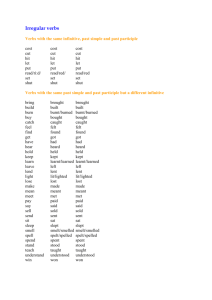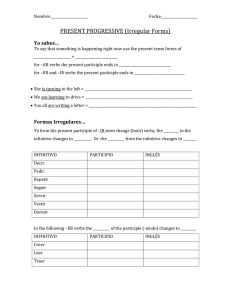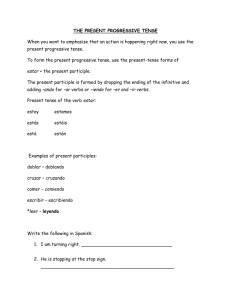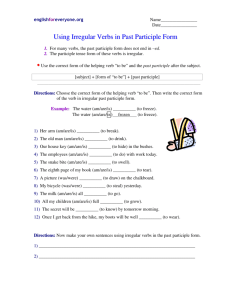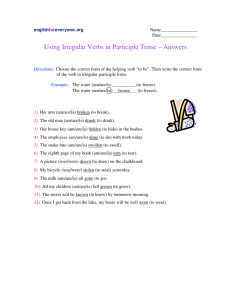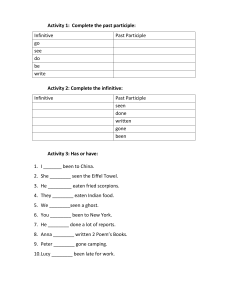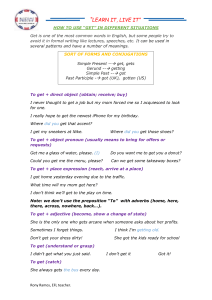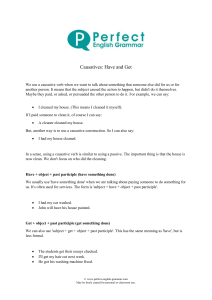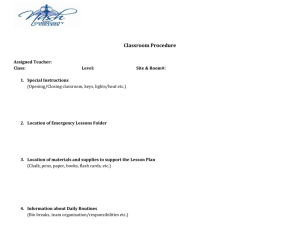Regular and irregular –ing forms
advertisement
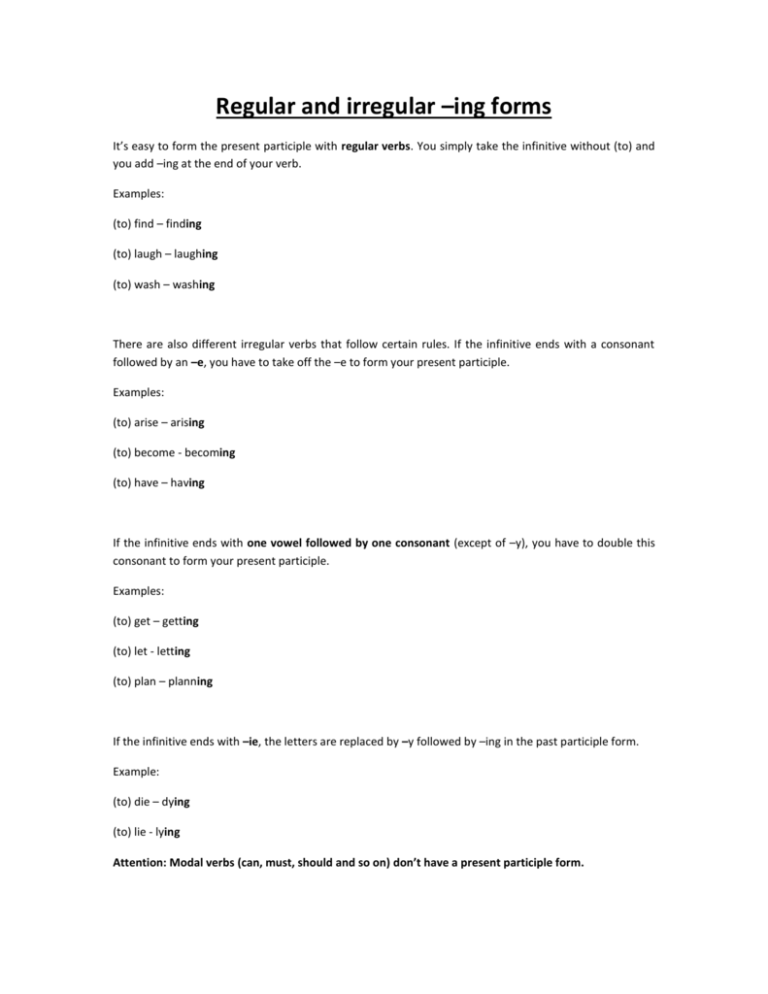
Regular and irregular –ing forms It’s easy to form the present participle with regular verbs. You simply take the infinitive without (to) and you add –ing at the end of your verb. Examples: (to) find – finding (to) laugh – laughing (to) wash – washing There are also different irregular verbs that follow certain rules. If the infinitive ends with a consonant followed by an –e, you have to take off the –e to form your present participle. Examples: (to) arise – arising (to) become - becoming (to) have – having If the infinitive ends with one vowel followed by one consonant (except of –y), you have to double this consonant to form your present participle. Examples: (to) get – getting (to) let - letting (to) plan – planning If the infinitive ends with –ie, the letters are replaced by –y followed by –ing in the past participle form. Example: (to) die – dying (to) lie - lying Attention: Modal verbs (can, must, should and so on) don’t have a present participle form. Task: Now, it’s your turn. Form the present participle of the following regular and irregular verbs. (to) live - ________________________ (to) be - _________________________ (to) cry - ________________________ (to) chat - _______________________ (to) like - ________________________ (to) ban - ________________________ (to) cut - ________________________ (to) dare - _______________________ (to) die - ________________________ (to) fit - _________________________ (to) flee - ________________________ (to) choose - _____________________ (to) go - _________________________ (to) hide - _______________________ (to) lose - _______________________ (to) pay - _______________________ (to) lie - ________________________ (to) see - _______________________ (to) shoe - ______________________ (to) wonder - ___________________
